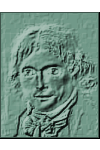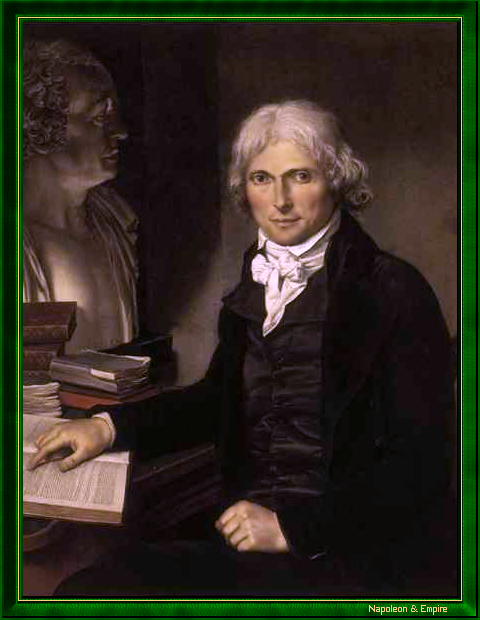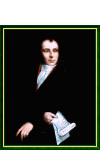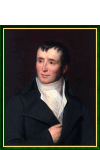Marie Francis Xavier Bichat
Pronunciation:

Marie François Xavier Bichat was born on November 14, 1771 in Thoirette-en-Bresse, in the Jura region. His father, Jean-Baptiste, was one of the first holders of the double doctorate in Medicine and Surgery instituted by the Montpellier Faculty of Medicine.
Young Xavier began studying medicine at the Hôtel-Dieu in Lyon, but in 1792 he was conscripted as a third-class surgeon in the army ambulance service, then attached to the military hospital in Bourg, where he received his practical training.
He came to Paris in 1793 on the recommendation of Doctor Pierre Joseph Desault, an eminent surgeon who had established France's first major surgical school at the Hôtel-Dieu hospital. Bichat became one of his most faithful listeners, and had the honor of being associated with his work.
Xavier Bichat began teaching in 1797, and was appointed physician to the Hôtel-Dieu in 1800, at the start of the French Consulate.
In addition to his clinical and teaching duties, he was also a researcher and author, making this young man the father of modern histology and physiology. In the space of a few months, he published no less than four fundamental works, all masterpieces for the novelty of their emphasis and ideas, and the infinite perspectives they opened up: a
Sadly, his precocious and dazzling career was only matched by its brevity: a violent fall down the stairs of the Hôtel-Dieu hospital on July 7, 1802, while suffering from typhoid fever, proved fatal in a matter of days: he died on the 22nd, in his home on rue Chanoinesse.
Xavier Bichat was buried in the Sainte-Catherine cemetery, before his remains were transferred to the 8th division of the Parisian Père Lachaise cemetery , which was still in the planning stage at the time of his death.
The respect in which Xavier Bichat's work is held by his peers is superbly expressed in the tribute Jean-Nicolas Corvisart paid him on his death, in a letter to Napoleon 1st: No one in such a short time has done so much and so well
.
"Doctor Marie Francis Xavier Bichat, near the bust of surgeon Sault" by Pierre Maximilien Delafontaine (Paris 1777 - Paris 1860).

In 1959, Les Postes de la République Française issued a 30 F + 10 F stamp bearing the effigy of Xavier Bichat.
A university hospital complex in Paris bears the name of Xavier Bichat. As a result, France's oldest continuing medical education organization, founded in 1947 by two professors of medicine who were heads of department at the hospital, is known as Entretiens de Bichat.
Address
14, Rue Chanoinesse. Paris IVème arrondissement
This is where Xaver Bichat lived at the time of his death in 1802.Other portraits

"Xavier Bichat". Nineteenth century French school.

"Xavier Bichat". Print of the nineteenth century.

"Marie Francis Xavier Bichat, physician" by Louise Adelaïde Desnos nee Robin (Paris 1807 - Paris 1878).